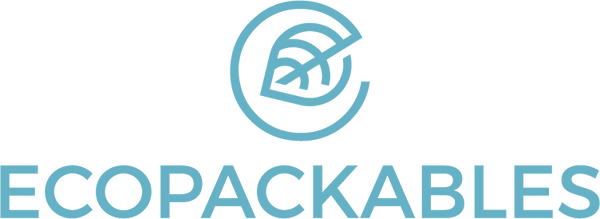As e-commerce continues to grow, so does the demand for shipping supplies, but the real sustainability impact of packaging materials doesn’t only depend on how they are produced. Understanding the full lifecycle of these materials, including shipping and disposal, can help businesses and consumers make smarter choices that reduce environmental harm.
The Beginning: Renewable vs. Nonrenewable Resources
Every packaging material starts with raw resources. Traditional plastics are derived from petroleum, a nonrenewable resource with a high carbon footprint. In contrast, sustainable packaging materials such as recycled plastics, compostable films, and paper from responsibly managed forests reduce dependency on virgin fossil fuels.
-
Recycled Plastic Mailers: Created from 100% post-consumer recycled content, reducing demand for new petroleum-based plastic.
-
Compostable Packaging Films: Sourced from plant-based inputs like cornstarch or sugarcane, designed to break down in composting environments.
-
Recyclable Cardboard Boxes: Made from recycled corrugate, keeping paper fibers in use for multiple cycles before they degrade.
By choosing renewable and recycled resources, companies minimize extraction of non-renewable materials and the environmental damage associated with them.
The Middle: Use and Reuse
The design and durability of eco-friendly packaging can extend its useful life. For example, resealable pouches, returnable mailers, and high-strength recycled boxes encourage reuse before disposal. This stage is critical: the longer packaging can serve its purpose, the fewer new resources need to be consumed.
Brands that invest in smarter packaging design (lightweight, right-sized, and durable) also reduce shipping emissions, since smaller, lighter packages use less energy to transport.
The End: Recycling vs. Landfills
Where packaging ends up is often the deciding factor in its true sustainability. Unfortunately, improper disposal sends tons of packaging into landfills each year.
-
Recycling: Keeps valuable materials like paper, cardboard, and plastic in circulation, reducing the need for virgin resources. However, contamination (like food residue) or lack of proper sorting often prevents successful recycling.
-
Composting: For materials certified compostable, industrial or home composting environments allow packaging to return to the earth as nutrient-rich soil. But if compostables end up in landfills, they do not break down as intended and instead generate methane, a potent greenhouse gas.
-
Landfills: The worst-case outcome for sustainable packaging. Even eco-friendly mailers or compostable pouches lose their benefit if thrown away improperly. Landfills also permanently lock away materials that could otherwise be reused in a circular economy.
The Results of Improper Disposal
Improper disposal creates a domino effect of environmental damage:
-
Valuable recycled fibers and plastics are wasted instead of reused.
-
Compostable packaging releases methane when trapped in landfills.
-
Landfill overuse contributes to habitat destruction and pollution.
-
The cycle of extracting nonrenewable resources continues, as new raw materials are needed to replace what was discarded.
This is why consumer education is just as important as the packaging itself. Clear labeling, simple disposal instructions, and greater access to recycling or composting infrastructure are essential to closing the loop.
Closing the Loop: A Circular Economy
The goal of sustainable packaging is a circular economy, where materials are designed to stay in use as long as possible before safely returning to the environment. At EcoPackables, we offer products like recycled bubble mailers, compostable pouches, and recycled-content cardboard boxes that support this cycle. When disposed of correctly, these materials reduce waste, conserve resources, and lower carbon emissions.

